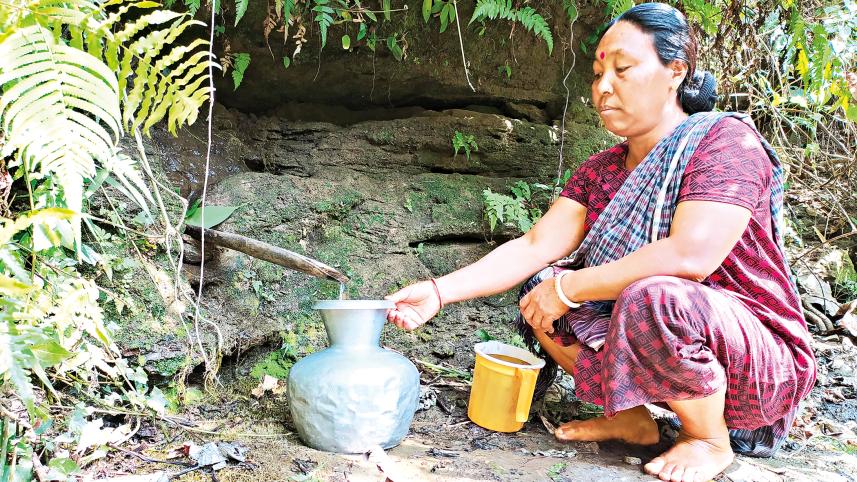‘I walk 3km daily to fetch water’

Sagarika Tripura, a resident of Alutila Rehabilitation Center area in Khagrachhari's Matiranga upazila, starts her day at 5:00am. With no source of water near her home, the 45-year-old has to make a 3-km trek through hilly terrains every day.
"I have to walk half an hour to collect water and need the same time to return home," said Sagarika.
Water used to be available in springs and streams near her home. However, the sources have dried up for the season.
The picture is similar in nine other upazilas of Khagrachhari. More than half of the population collect water from natural sources, and they face a severe water crisis during the dry season every year. During a recent visit to Alutila, this correspondent found that women and girls were collecting water for both drinking and household use from wells.
Adinath Tripura, a resident of the rehabilitation centre area, said people now depend on surface water sources -- such as waterfalls, springs and streams -- which are unsafe for drinking.
"Many people often suffer from water-borne diseases due to lack of safe drinking water," said Adinath.
According to Khagrachhari's public health department, the number of deep tube-wells and pressed tube-wells in the district is more than 10,000. It is possible to supply water to 70 percent of the district's population.
The country's three hilly districts -- Bandarban, Rangamati and Khagrachhari -- have long been experiencing a drinking water crisis, particularly during the dry season. Groundwater cannot be lifted through tube-wells in many areas.
"We tried several times to set up a tube-well near Alutila Rehabilitation Center area. But we could not find water, even after digging 1,200 feet," said Ayub Ali Ansari, assistant engineer of the department. "We are trying to initiate a project for people in the hills soon," he added.




 For all latest news, follow The Daily Star's Google News channel.
For all latest news, follow The Daily Star's Google News channel.
Comments